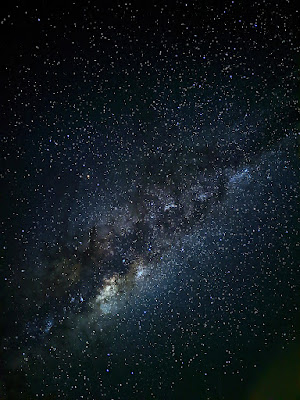Easy and cheap(ish) Astrophotography
Astrophotography is arguably the most technically demanding discipline in the art of photography, with high demands in both equipment and post-processing.
In recent years advances in mobile phone technology have given everyone access to easy wide-field astrophotography, leaving three areas that still require high end equipment: Stellar, Planetary, and Deep-sky.
Is there still a place for high end equipment in wide-field? Absolutely! Just like the Instagram folks are discovering that a real camera takes better photos than a mobile phone, so too will a dedicated astro rig take better photos than a mobile phone.
But the mobile is accessible, cheap, and easy to use - so it will get folks in. If you can get shots like this in a Bortle 5 area, it will get you excited, and some folks will be inspired enough to go further.
But what about deep sky?
Enter the "Smart Telescope".
These are not so much telescopes as dedicated astrophotography rigs. These have many advantages - some of them even will perform stacking in-device. On the down side, they are typically quite short in lens and small in sensor. They are not so good in for planetary or stellar imaging.
It is one of these devices I want to talk about.
Back in April, I saw that one of the localish stores was selling the Dwarf II Smart Telescope.
Now this has about a 3 degree field of view, and an 8MP resolution - although this drops in practice because it bins pixels into 2x2 groups to improve light gathering. It does, however, shoot in FITS format, and then stacks images automatically. And it does not have an eyepiece - you drive it from your phone or tablet.
This gives straight out of camera results like this shot of the Homunculus Nebula in Eta Carinea. With a bit of post processing in Snapseed, you get something a bit more impressive.
This is by far not the best photo ever of that nebula. What is impressive is that this was shot in the middle of the Perth CBD (Bortle 7 or worse) with a half moon.Even more impressive to my mind is that this was shot in less than 15 minutes.
During the day, you can stick a solar filter on it, turn off binning, and get decent solar images as well.
Again, not the greatest, but good, and you can see texture and sun spots.
And all in a package costing less that AUD900.
Is it the best smart telescope on the market? No. There are ones that are two or three times better. But they also cost five to ten times more. At which point you are starting to look at a low end tracker and a DSLR anyway. And there is one more thing about this.
It is tiny - less than 2kg, and about the size of two cans of Guinness, making it incredibly portable. This is a telescope you can take hiking.
Here it is shooting the recent eclipse - the gold thing is a Solarcan Puck.
Does it have flaws? Yes. Focussing is a pain, and there is no way to upload object data or program a night's viewing. But these are relatively tame. And the dev team seem to be fairly responsive. On the positive, it also stores the raw FITS files, so you can re-process in Siril or similar if you prefer.
So do I recommend it? Yes - with the caviet that you don't expect it to be magic. It can do some amazing things, but it does have limits. Shooting planets is pretty much a dead loss. Some of the larger galaxies can be resolved with it, but again, don't expect too much. For nebulae - particularly the larger ones - it is amazing.








Comments
Post a Comment